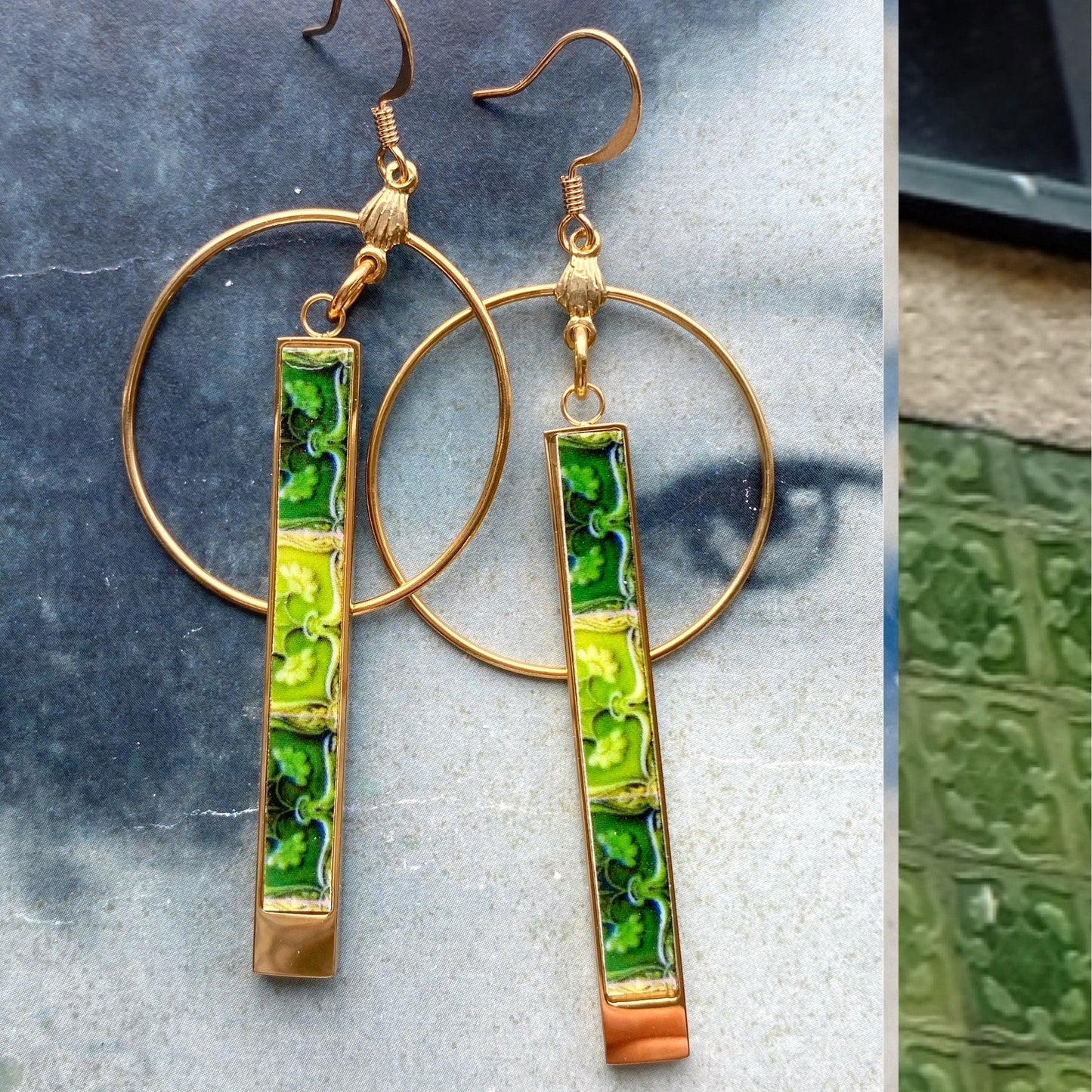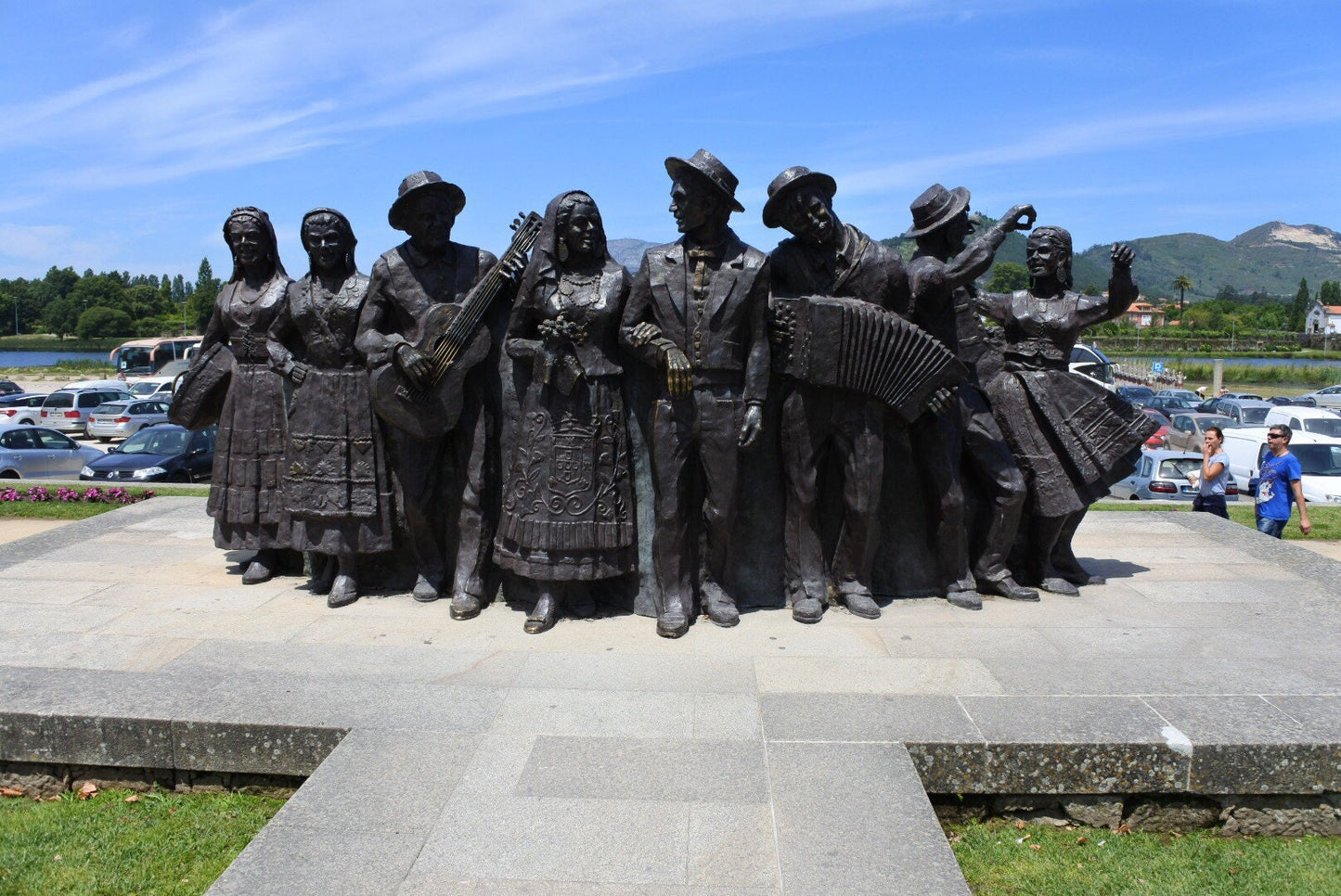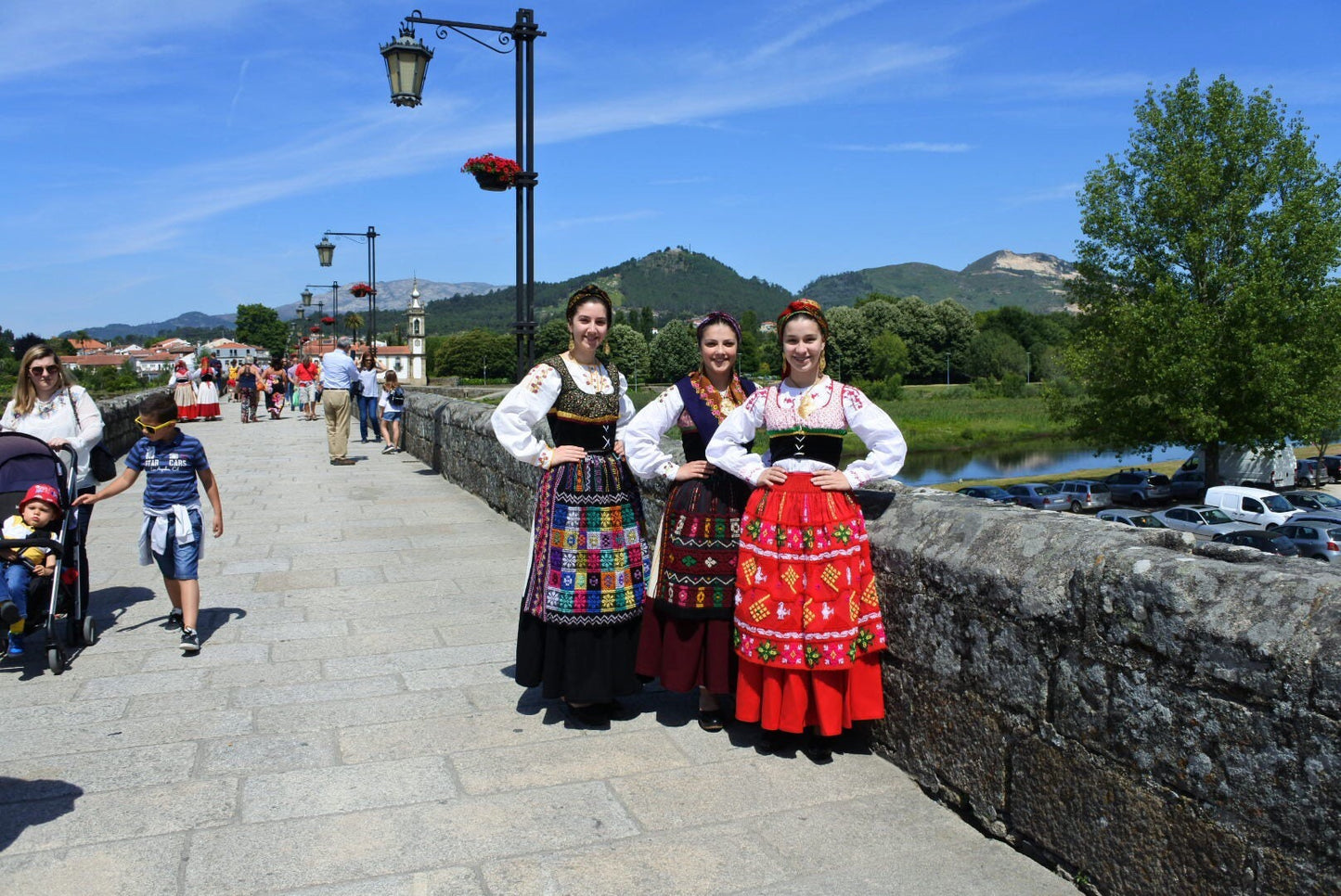My Store
Atrio Earrings Circle Bar Portugal Tile Hoops Green Tiles Antique Azulejo Tile Portuguese Vila do Conde and Lisbon Stainless Steel
Atrio Earrings Circle Bar Portugal Tile Hoops Green Tiles Antique Azulejo Tile Portuguese Vila do Conde and Lisbon Stainless Steel
Couldn't load pickup availability
These earrings are a perfect gift and will come with lovely packaging for yourself, a friend, coworker, sister, mom, wife or girlfriend! Perfect little pieces of Portuguese history!
These earrings are 3.20" long and extremely lightweight. The bar is solid stainless steel and the hoops is vintage brass. They will come in a gift box ready for gift giving.
The tiles are from a home in Vila do Conde Portugal.
According to Wikipedia:
Vila do Conde is one of the oldest settlements in northern Portugal. Geological artifacts dating to the Paleolithic have been discovered in sites in the parishes of Modivas, Malta, and Labruge dating from 100,000 to 15,000 years.[3] In other parishes there have also been discoveries of implements and mounds dating back to the Bronze Age and Neolithic periods indicating a period of transition between forging and sedimentary civilizations.[3]
Its origins date back to the founding of the Portuguese territory; the earliest written document (953), by the Countess Mumadona Dias, refers to the Villa de Comite, in a chart used for the sale of land by Flamula Pelagius, to the Monastery of Guimarães.[4] But its ancient origins date back to the Castro of São João (Hillfort of St. John), and other Iron age castros, that include dispersed settlements in Retorta, Bagunte, Ferreiró, Vairão and Labruge.[3] In the 18th century, Jerónimo Contador de Argote, citing references to the castro culture, identified the existence of one of these structures in the hilltops of Cividade de Bagunte, a structure occupying 50 hectares (0.50 km2).[3] Other castros within the municipality have been mostly agricultural, and some discoveries of ceramics have occurred, although most have been found in ruins.[3] Similar vestiges of the Roman occupation of the region continue to be discovered, and archaeological digs are ongoing in a dozen sites throughout the municipality.[3]
The origin of the toponym is unknown. Most authors point to the 9th century counts of the Reconquista, those who came from Galicia and Asturias and were ancestors of the aforementioned Flamula, as probably linked to the genesis of the name.[5]
Later, King Dinis of Portugal bestowed on Maria Paes da Ribeira these seigneurial holdings (Dinis had long had many illegitimate children with the noblewoman).[6]
In 1318, Afonso Sanches (the illegitimate son of King Dinis of Portugal and Aldonça Rodrigues Telha) and Teresa Martins (daughter of João Afonso de Menez, Count of Barcelos, granddaughter of Sancho IV of Castile) and great-great-granddaughter of Maria Pais da Ribeira, founded the Monastery of Santa Clara. Later referred to as the Convent of Santa Clara, the construction of the monastery developed from the bad relationship between King Dinis and his wife, Queen Elizabeth of Portugal, due to the king's preference for his illegitimate son. The queen re-founded, in 1314, an abandoned monastery in Coimbra, which she renamed Santa Clara. This prompted King Dinis to sponsor and authorize Afonso Sanches to build a monastery of the same invocation on the right bank of the Ave river, where an ancient celtic hillfort was located.[7] The cornerstone was laid in 1318, and once completed it was deposited in the hands of the Franciscan Order, which he patronized throughout his life, eventually leaving Vila do Conde, its lands and rents, in their possession after his and his wife's deaths.[8][9] Today it is the ex-libris of Vila do Conde. The priory became the judicial seat, with all the royal rights in the area. Yet, King Edward began to contest these grand privileges during his reign, and King John III of Portugal finally stripped them of those rights in 1537, investing his brother Edward, with the seigneurial titles. At the marriage of Catherine, his daughter, with John I, 6th Duke of Braganza, the Infante Edward passed on the title to the Royal House of Braganza.[9] Consequently, Vila do Conde had representation in the Royal Cortes and their alcaldes were nominated for dukedoms in the Royal House of Braganza.[9] But this was also responsible for the local government weakness and high taxes on most local economic activities, except shipping and trade, where the national government had sole control.[10]
During the 16th century, attained the apex of its commercial and maritime importance due to naval construction, associated with the Portuguese Age of Discovery. Many of the historical buildings, such as the port and customshouse, were all integral in the commercial relief of the 16th century. The passage of King Manuel through Vila do Conde, during a pilgrimage to Santiago de Compostela, in 1502, helped to develop some of the important infrastructures in the city: the Matrice Church, Praça Nova and municipal buildings, along with new arterials, were begun under the reign of Manuel I.[8] The Praça Nova (Portuguese: New Square), today Praça Vasco da Gama was opened in 1538, during the reign of King John III of Portugal, and where the municipal buildings were located.[8]
Manuel I conceded a foral (royal charter) in 1516, due to the active and integral participation of its population during the exploration of the new lands in India.[4] Of these mariners of note, were the brothers Paulo and Francisco Faria, who were on Vasco da Gama's expeditionary voyage.
During the 19th century, French troops were responsible for the destruction and pillaging of many of the infrastructures and deaths. By the middle of the 19th century, the town had one ecclesiastical parish, dedicated to Saint John the Baptist, founded by Manuel I of Portugal, and erected by the archbishop of Braga, Diogo de Sousa in 1518. In addition, the community included the Church of the Misericordia, hospital, six chapels, municipal building, customhouse, the Convent of Santa Clara (now remodelled and expanded since its construction), and the Convent of Nossa Senhora da Encarnação. In addition, the secular buildings included a small theatre, a recreational assembly and ornate dock of rock on the right margin of the Ave River towards its mouth, and across from the Chapel of Nossa Senhora da Guia.
In 1987, the urbanized area was elevated to the status of city.
Please note that some of our items will come with a tag stating "Return only accepted if tag is attached". There are no exceptions to this policy.
The term Azulejo or Tile dates back to the time of Arab occupation of the Iberian Peninsula. The term "azulejo is derived from the Arab word (al zulej) which means a smooth and polished stone. It wasn't until the 16th century that the process was perfected into the tile we know today.
All my tiles are replicas made of polymer clay where the image actually becomes part of the clay through baking. No glue is used in the process. The pieces become waterproof and scratch resistant. Due to the handmade and hand shaped nature of each tile, slight variations will occur, as no two pieces are alike.
Wear a Piece of History!
+ Please note that some of our items will come with a tag stating "Return only accepted if tag is attached". There are no exceptions to this policy.
🌺 CLICK here to return to my shop:
https://www.etsy.com/shop/Atrio
🌸 Favorite our shop for updates
🌿 Follow us on Instagram @atrio_azulejos
🌿Follow us on Facebook https://www.facebook.com/o.Atrio/
+All items will come in a gift box ready for gift giving.
🌺Please find our large selection of PORTUGUESE FILIGREE at atriotiles.com
Although the tiles are water resistant, care should be taken to keep the tiles and metal out of water and away from lotions, including cosmetics, sunscreen, hairspray, etc. The chemicals in these products will dull the finish on the tiles.
There is a 5% RESTOCKING for item PLUS a $3.50 fee for returned items.
🌸🌸🌸🌸🌸🌸🌸🌸🌸🌸🌸🌸🌸🌸🌸🌸🌸🌸
QUESTION: Are your tiles real antique Portuguese azulejo tiles?
ANSWER: Absolutely not. In our description of each item, we try to call attention to the theft and destruction of antique Portuguese tiles. Even the tiles found in flea markets and antique stores were most likely stolen off a building during the night. We have seen entire home facades disappear during the night to thieves. Thankfully, Portugal just passed a law declaring this theft a crime. We can only hope that it will one day be enforced.
For this reason, we have no part in this despicable crime. We make our own tiles from polymer clay. Ceramic would be far too heavy for earrings and impossible to mold into the shapes we want. For the hoops, we mold the clay as thin as we can get it, so that it will look pretty inside the hoops.
Share










